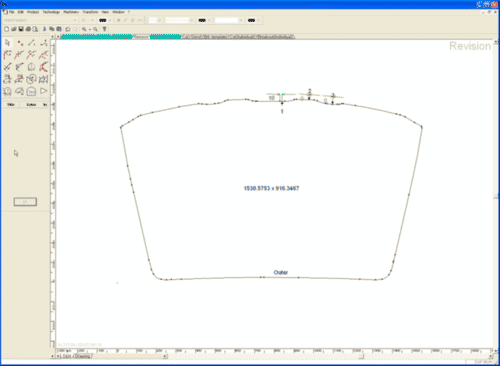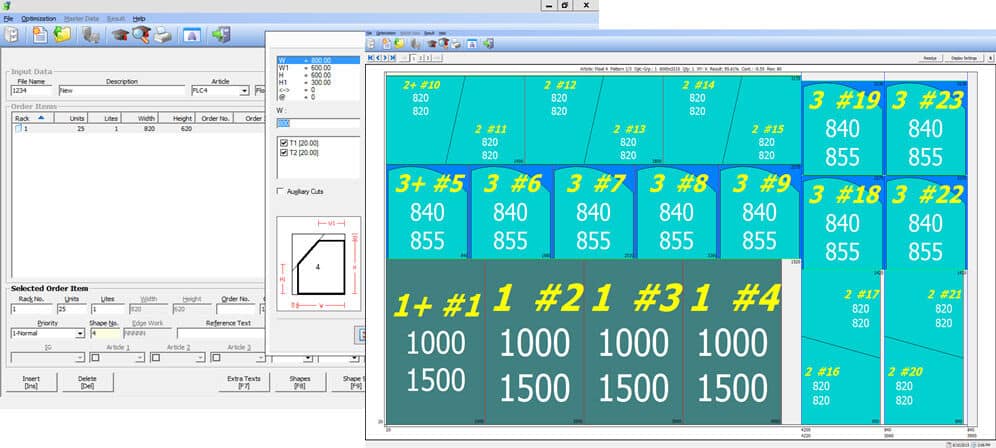A+W SOLUTIONS
Let us help you lead
A+W is the global leader of premium software designed for the flat glass industry. Our innovations in both enterprise resource planning and optimization software has heightened efficiency, raised industry standards, and helped our customers gain more control over every step of the process.
Automotive Glass
The many functions of automotive glass — safety, insulation, sound protection — requires multi-stage processing, often involving unique parts, and its manufacturing can involve sophisticated cutting, different finishes, and the production of large quantities with short cycle rates.
CAD Designer by A+W allows you to improve quality and cycle time by directly transferring technical drawings into the machine for processing. We’ve worked hard to make our software easy to use for anyone, not just trained craftsmen. Invoicing is also made easy because of how the software allows data imported into your ERP system a cinch. The software is also versatile in how it integrates with Static Optimizer by A+W which gives you the opportunity to optimize the cut.
OUR SOLUTIONS FOR YOUR SUCCESS
CAD Solutions
- Draw and measure complicated shapes, with simple tools
- Add complex processing steps, already taking into account how and on which machines these steps will be carried out later on
- Presentation of multi-level production processes (e.g. cutting, breakout, grinding and drilling)
- Import and export of DXF files, as well as the integration of digitized shapes – supported by the intelligent A+W grading method
- Control individual processing machines and / or complete production lines
Enter complex shapes and technical bills of materials including different processing types using simple CAD tools. The software is designed in such a way that it can also be used by employees without drafting qualifications and AutoCAD experience. Training requirements are thus reduced to a minimum.
Transfer the data for commercial entry and settlement to your ERP system (regardless of whether SAP or A+W ERP systems). A standardized format facilitates imports and exports. Integration into the A+W Static Optimizer system also provides the option of optimizing waste.
NC information for all machines in a line is created in one step. You have generated the technical drawing using the A+W CAD Designer (Automotive) – now transfer the information directly to the machine.

Optimization Solutions
- Entry of shapes and customer data
- Set different optimization parameters (e.g. break edges)
- Shape geometries can be nested into a circumlocutory rectangle
- Accommodates import of SN files and DXF files
The volume of glass inventories and other parameters relevant for the cutting and breakout process, such as break edges, cutting types, distances between the cuts etc., can be managed in the master data menus. Cut sizes, rectangles and shapes can be entered or imported via an interface file.
An improved optimization algorithm guarantees minimum waste and simultaneously the most suitable cutting patterns for easy breakout on the cutting tables. After an optimization, the cutting plans can be modified – even before the NC instructions are passed to the cutting table.
The optional nesting of shape geometries and importing DXF files increase the quality of the system and significantly improve your yields.
Optional sequence optimization is used to align the cutting plans for production on the basis of the required glass sequence.

